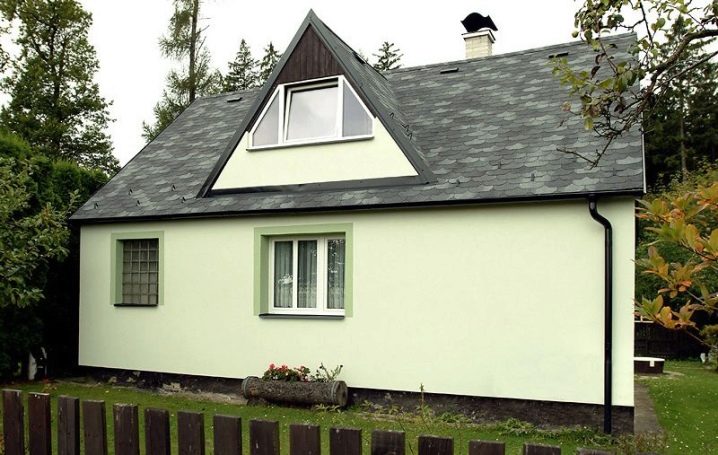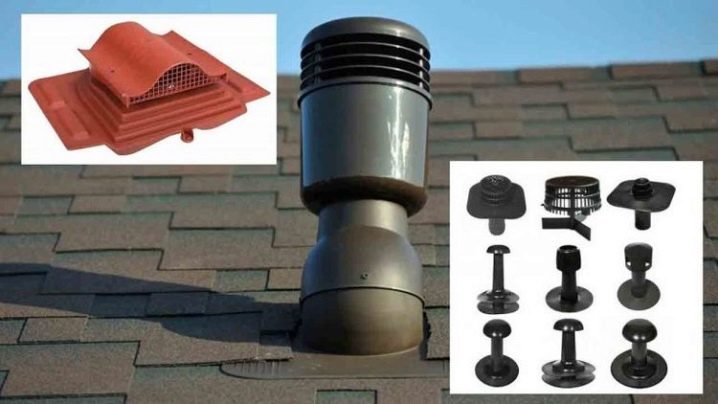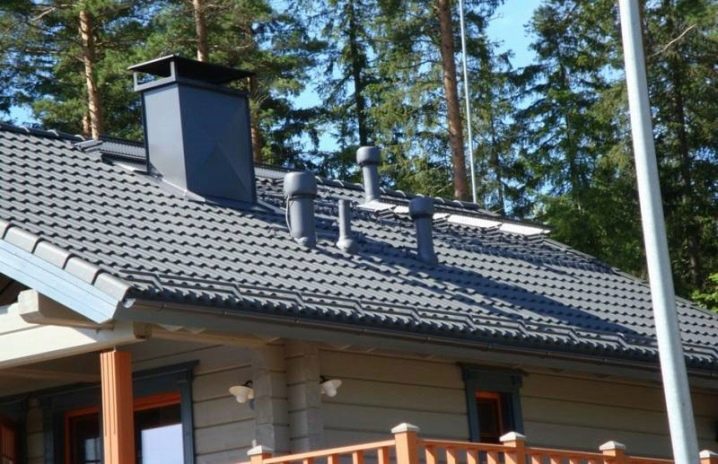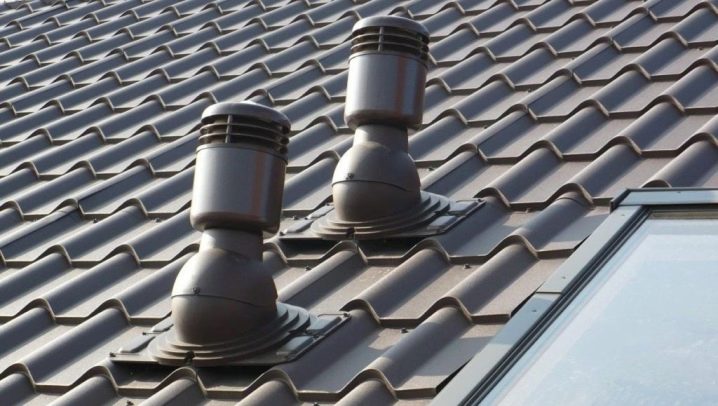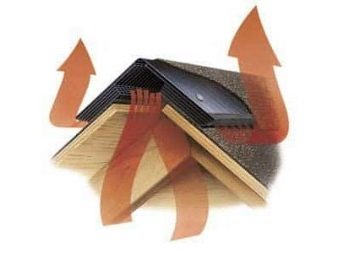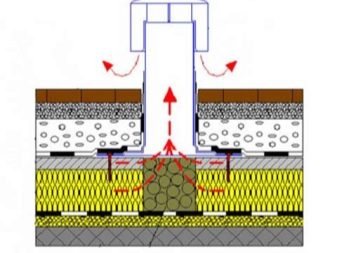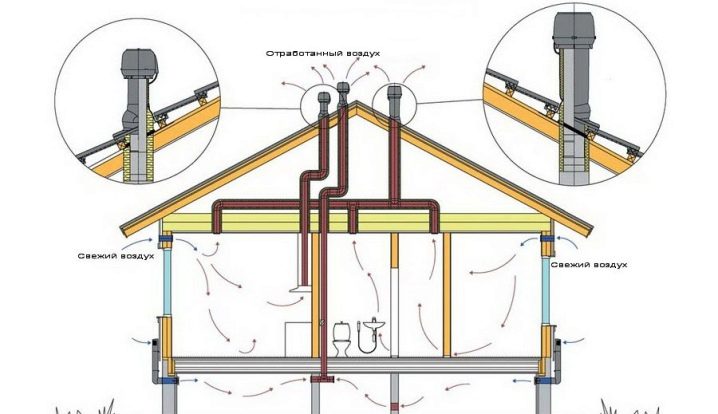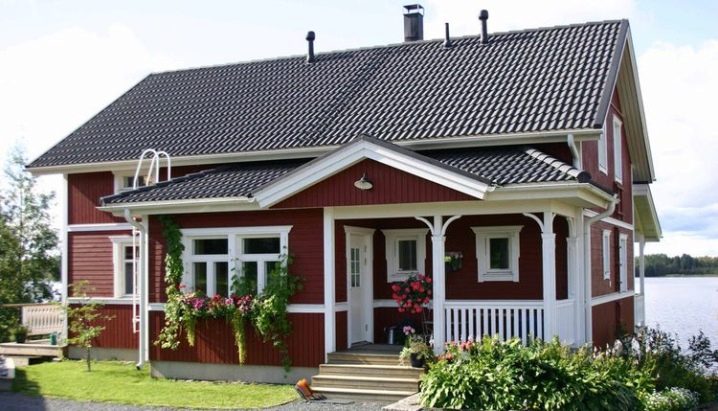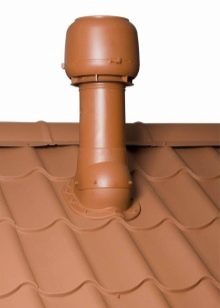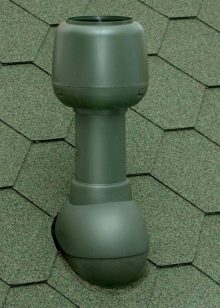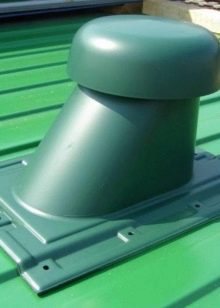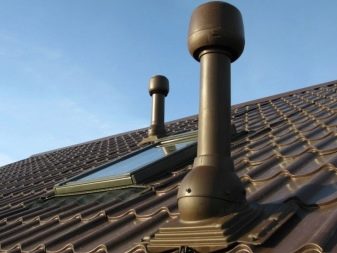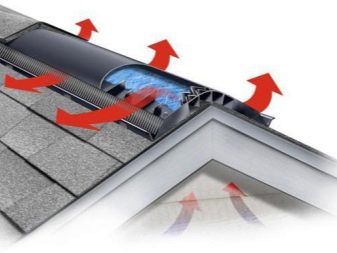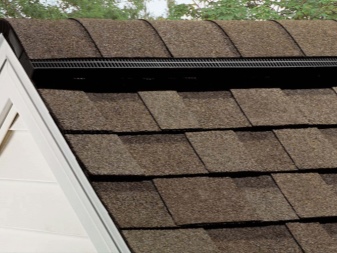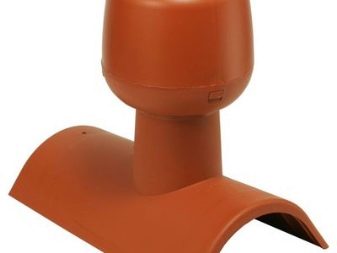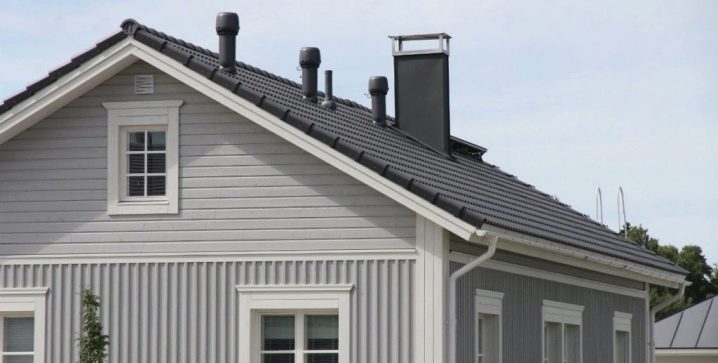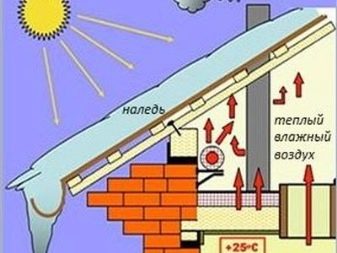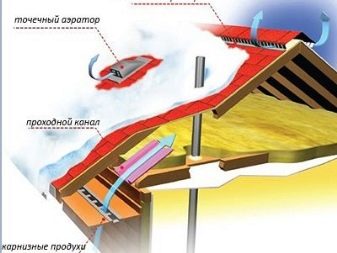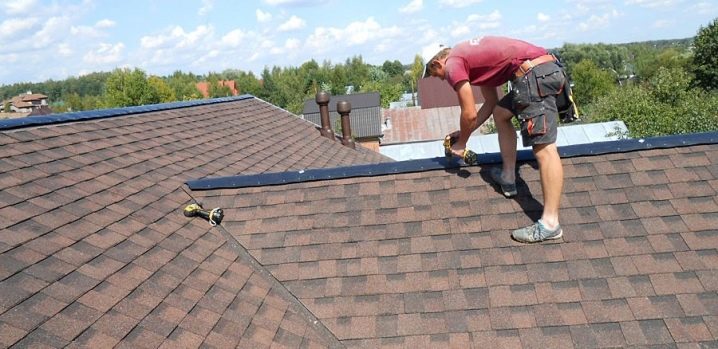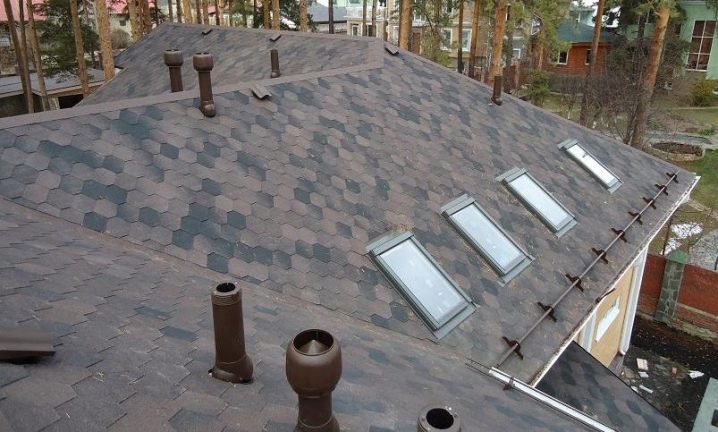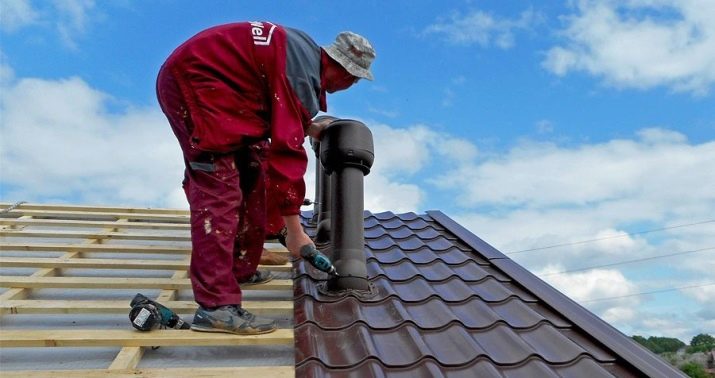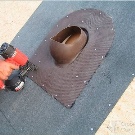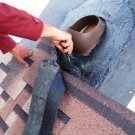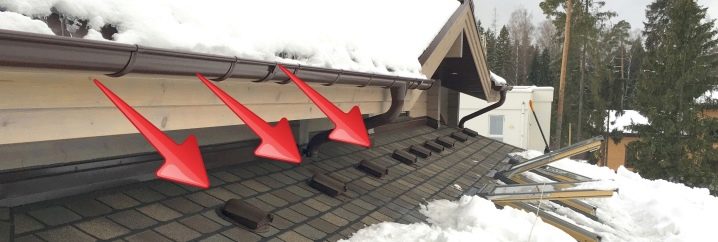What is a roofing aerator?
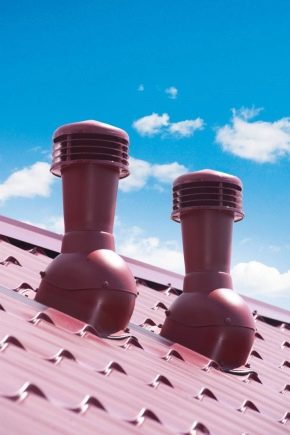
The quality and durability of the roof depends on many factors, including its protection from moisture and condensate. Moisture penetrates into the roofing space from the environment or from the inside of the room (in the form of water vapor). In addition, soft roofing or heat-insulating materials can accumulate moisture already at the installation stage.
The result is the destruction of waterproofing and roofing materials.microclimate is disturbed in the room (the air becomes too humid, there is a smell of mustiness, mold). Insulation in this case also loses its properties (when wetting 2-3% of the material, its thermal conductivity rises to 40%, which causes increased heating costs).A way out of this situation, as well as a means of preventing it, is to install a roofing aerator.
What it is?
Roofing aerator is a special device designed to remove condensate from the roofing space. Externally, it looks like a pipe coming out of the roof and having an umbrella at the top to protect it from precipitation. The diameter of the pipe is 63-110 mm. In most cases, the material for manufacturing is polyethylene. Its installation is carried out on the roof, while its slope and type of coating used do not matter.
The functions of the roofing aerator are as follows:
- condensate removal;
- elimination of air of high humidity;
- ventilation under-roof space;
- prevention of decay of heat-insulating and other roofing materials:
- reducing the risk of roof leaks.
Effective work is demonstrated only by a few aerators installed on the roof. Their type and quantity required are calculated based on the size and condition of the roof, the volume of moisture in the room.
Installation of the device can be carried out both at the construction stage and during the operation of the building.
Especially well proved these units in the organization of a soft roof, a frequent problem which is the swelling of the carpet under the influence of moisture and, as a consequence, the leakage of the roof.
Thanks to the installation of the aerator, the wet steam lifted from the room does not turn into condensate on the surface of the roofing carpet, which minimizes the excess pressure in the latter. As you know, increased pressure in the roofing carpet leads to the formation of bubbles on the roof surface, which reduces its service life and causes an unsightly appearance.
An aerator is also needed on the roof of a metal tile, which, as we know, is also afraid of moisture. Thanks to this device, moisture is brought out, and metal surfaces are protected from the effects of corrosion.
Finally, the roof of corrugated board also needs a similar "assistant". The aerator in this case removes moisture, and with it the smell of stuffiness, dust and gases from the ventilation cushion, fills the space under the roof with fresh air.
Special features
For drainage of the roof it is necessary to achieve mixing of external and internal air flows.Due to this, it is possible to reduce the air temperature in the lower, close to the inside of the house, the layers of the roof and the movement of moisture to its upper layers. This, in turn, will lead to the drainage of the insulating material, and then the roofing carpet, roof elements. At the same time, with natural drying, the heater completely restores its properties.
Aerator and is a similar natural fan installed on the roof. His work is done by creating traction in the device’s pipe. Traction is formed due to the difference in pressure of wind flows in the environment and the under-roofing zone.
Aerator construction consists of the following parts:
- pipe with diameter from 63 to 110 mm;
- a special umbrella covering the pipe from above and protecting it from precipitation;
- mounting system, through which the pipe with an umbrella is securely and tightly fixed on the roof surface.
For the manufacture of the aerator used durable plastic or steel- "stainless steel", characterized by resistance to frost, moisture, UV radiation, corrosion. The temperature range of operation of the pipe is -50 ... + 90C.
Advantages and disadvantages
The main advantage of the roofing aerator is the ability to remove moisture outside, which protects the damage to the roofing material, contributes to its durability, and also saves the roof from leaking. Removing moisture, the fan prevents corrosion of metal tiles, and also contributes to the preservation of the properties of the insulating material. For the owner of the building, this makes it possible to save on heating.
Together with moisture and condensate, a musty smell is removed, which contributes to the formation of a beneficial microclimate in the room. This, in turn, allows you to avoid the formation of mold, fungus and other pathogens in the room.
It is important that the device is suitable for all types of roofs.It is combined with the most common types of roofing materials. Installation is carried out even on complex-shaped roofs with height differences. Finally, it can be mounted at all stages of construction or during the operation of the building. Moreover, the installation process does not require any special skills or tools.
The disadvantages of the system is the inability of point aerators to provide ventilation of the entire roofing surface, in connection with which there are zones with stagnant air.With regard to the use of continuous aerators, their installation implies the dismantling of the roof, so install them better during the construction phase.
Species
Depending on the type of roofing material used, the following types of aerators are distinguished:
- For metal tiles. They are a PVC pipe of increased strength or stainless steel. These materials are resistant to temperature changes, exposure to direct sunlight, and corrosion. Their installation is carried out in the upper part of the roof as close as possible to the ridge.
- For a soft roof. At the heart of the pipe - atmospheric and impact resistant polypropylene. It is mounted on the highest points of the roof across its entire surface, as well as at the joints of slabs. The aerator in this case reduces the pressure of the roof, which prevents the formation of bubbles on it.
- For professional flooring. In terms of its performance and its functions, it is similar to a device for a soft roof, but it is mounted near the ridge.
In addition, today in the market you can find fans for the roof of natural tiles, folding roof. Depending on the type of roofing, not only the material of manufacture and the location of the aerator change,but also the type of its attachment. All these types of roofs can be found in the catalog of domestic products "TechnoNicol". According to its technical characteristics and quality, it is no different from imported ones, but it is cheaper at the same time.
Depending on the number and type of installation, emit aerators:
- Point. They are used to drain individual areas of the roof, as a rule, for a flat roof.
- Continuous. Represent a chain of devices that provide ventilation throughout the roof.
Continuous structures, in turn, are divided into the following types:
- Pitched. The scope of application of the pitched structure is the areas where it is necessary to increase the movement of air masses - long or complex slopes, roof roofs, and also in those parts where the ventilated gap is interrupted.
- Ridge. Ridge aerator is most often mounted on the attic, having a type of insulation "under the horse". Thanks to their use, it is possible to eliminate moisture vapor throughout the ridge zone.
By the way, the use of a ridge aerator allows not only to remove excess moisture, but also toxic evaporation from bitumen, which is necessary for organizing a soft roof.
Pitched aerators can be of the following types.
- Flat roofing valves (or KTV-valves). Visually, such devices are similar to tiles, have a strainer that prevents the penetration of sediments and insects into the under-roof space. The scope of their use - the roof, the slope of which is not less than 25 degrees.
- Fungal aerators. They are used on flat roofs, have the form of a pipe with an umbrella.
In addition, there are pitched turbine aerators, which can also be fungal or type KTV.
Along with the considered aerators, they emit another version of them - turbine ones. Their main difference is the presence of an electric fan, which makes the ventilation process more active. Turbine models are selected based on the slope of the roof. The best option of such an aerator is made of aluminum.
The opinion that overhangs provide ventilation of the roof is considered erroneous. The air element of the overhang, rather, provides an influx of air masses, while the fan in question ensures its output together with the air vapor. In other words, these are 2 elements that ensure the roof is dry. So, roll roofing with a ventilated device will last much longer than the one where no installation of an aerator is provided.Problems with the latter may arise already after 3-5 years of operating a new home.
Subtleties of operation
There is no specific norm according to which every home needs roofing aerators. Moreover, they can easily be dispensed with in old-style houses with an unheated attic room and a roof. In such constructions, the air, rising from the living quarters, turns out to be in the attic, where it mixes with the cold air, after which it is discharged through an unheated roof.
In buildings of the new type, the roof is usually insulated to prevent the heat loss of the building, often in the attic is equipped with attic rooms. In addition, in conditions of high rates of construction, an insufficiently dried roof system is often used. As a result, moisture vapors cannot “get out” outside and they are absorbed into the truss system (usually not dried enough already), and then into the elements of the roofing pie. Undoubtedly, such structures require air elements on the roof.
Training
After you decide to install aerators, you need to decide on their appropriate type, place of installation and the required number.
So, on pitched roofs covered with metal tiles, the devices are placed at the highest points of the roof, and they should be removed from the ridge at least 50 cm. On flat roofs, aerators are usually placed at the joints of roofing slabs or at the highest elevations.
For a gable roof, equipped with a ridge and end, you will need to install devices along the watershed line. There are cases when the fan mounts under the ridge. As a rule, this installation is found on the folded roofs.
Payment
After the master decides on the type of aerators, he is concerned about how many meters of roofing space 1 fan is enough. As a rule, the maximum installation step is 12 meters.
As already mentioned, the number of pipes "with the fungus" is affected by the characteristics of the roof. For flat roofs, 1 aerator for every 100 square meters is enough. m, the distance between the devices should be a maximum of 12 m. In the presence of the valley, aerators are mounted along the watershed line.
Installation
Installing an aerator involves several steps.
- Creation in the roof of the perforation, which comes to the insulation layer.The created hole must exactly match the diameter of the aerator.
- If you find wet areas of insulation should be replaced with dry.
- The device in its lower part is coated with mastic, and then fixed to the base of the roof.
- An additional skirt of the nozzle is fixed on the roof with the help of screws.
- An additional waterproofing should be provided at the bottom of the nozzle.
- Seal all slots with a special compound to prevent roof leakage.
Useful recommendations
Experts are recommended to think about installing aerators at the planning stage of construction. This is especially true of buildings characterized by high humidity (kitchens, pools, laundries). This will allow to carry out the necessary calculations and to achieve maximum efficiency of the devices.
All elements of the aerator system are recommended to acquire one brand. This will ensure their best compatibility and simplify the process of replacing individual parts of the structure.
When buying a turbine aerator, it is important that it fits to the angle of inclination of the roof.to be mounted on. Corresponding values can be found on the packaging of the device.When choosing any type of aerator, give preference to certified products. On the surface of the device should not be deformation, scratches, chips.
When installing a fan in a soft roof after a hole is cut in the insulation, it must be filled with gravel or expanded clay.
The best time of year to install an aerator is summer. The weather should be warm, dry. It is not recommended to be engaged in installation after a rain, it is dangerous.
How to install a roofing aerator shown in the video.
